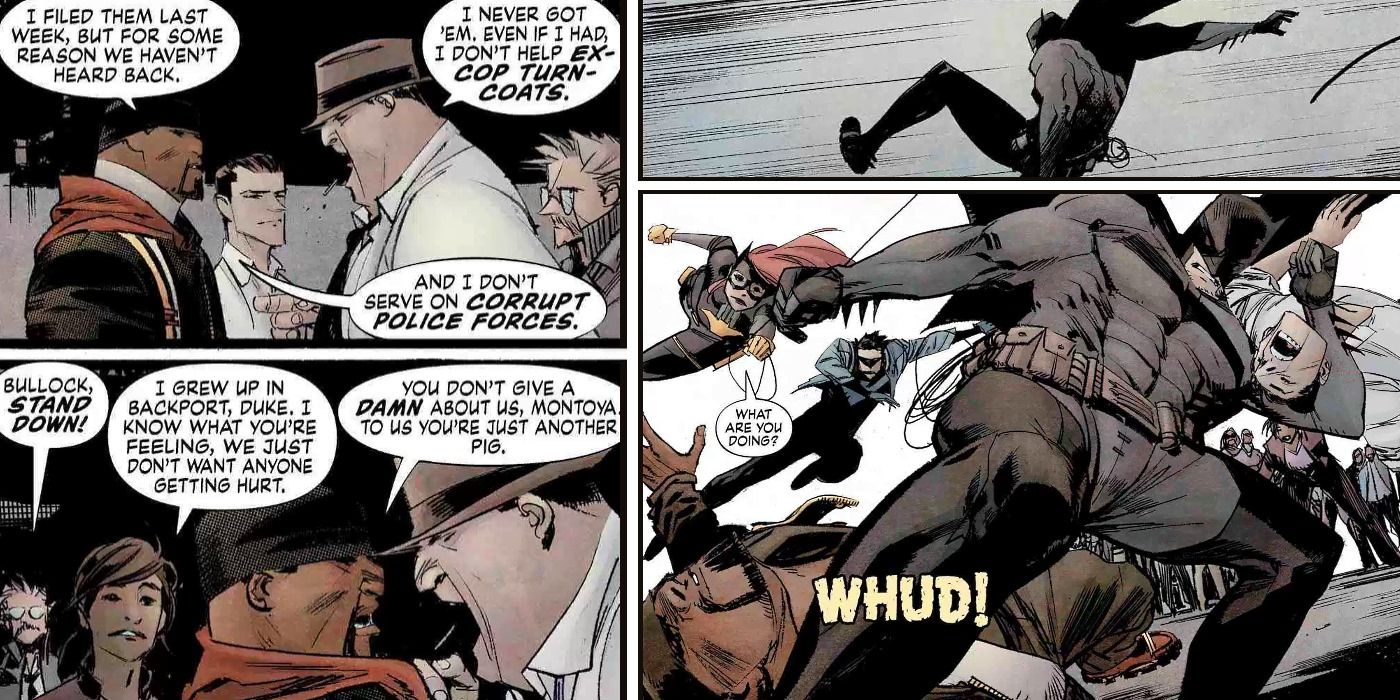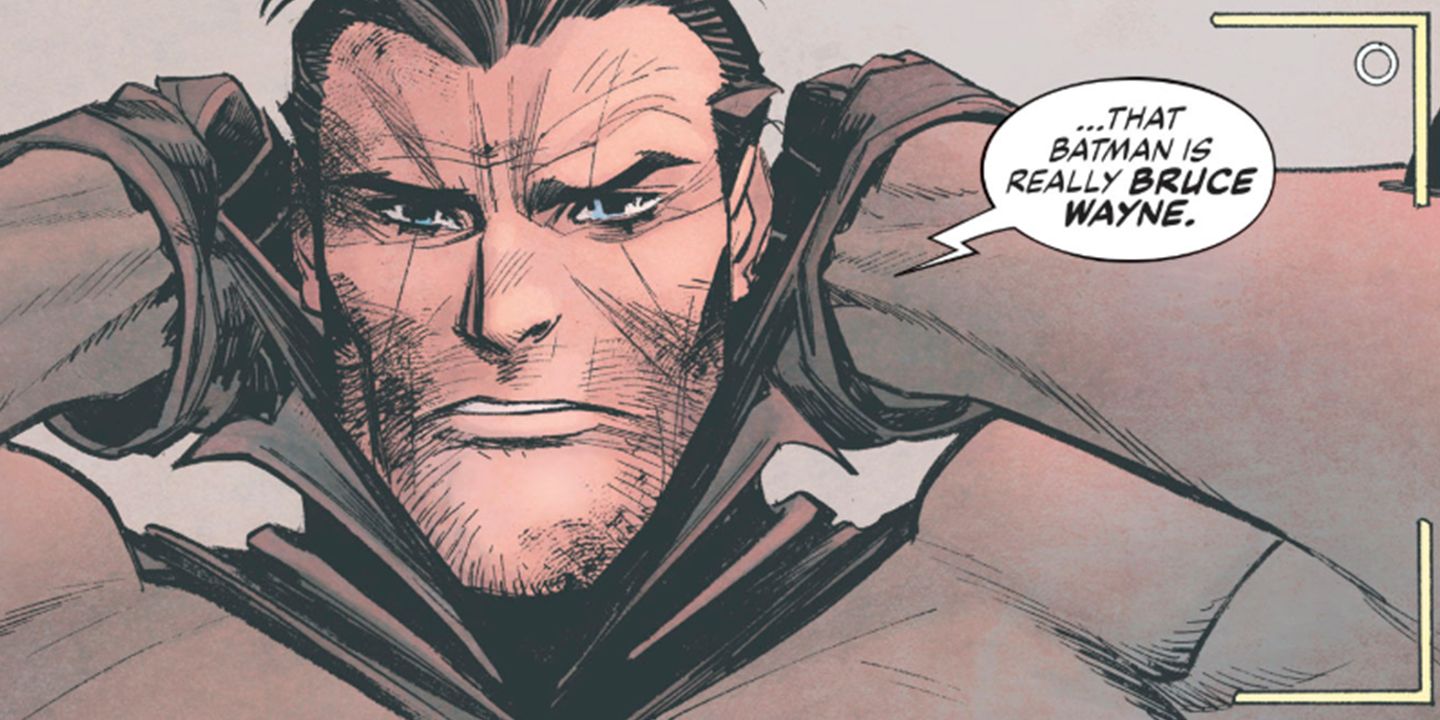Warning: SPOILERS for Batman: Curse of the White Knight #7
The Joker has deployed a variety of wacky and at times horrifying tactics to take on his arch nemesis Batman, but his master plan in the acclaimed White Knight series was arguably the most successful. Taking place in an alternate timeline within DC’s adult themed Black Label umbrella, Sean Murphy’s books Batman: White Knight and Batman: Curse of the White Knight offer a more grounded take on Gotham’s defender, one where the Joker finally brings down Batman–by making the argument to the general public that the Dark Knight does as much harm to the city as he does good.
Furthermore, he argues that since both law enforcement and the courts have allowed (and even encouraged) an anonymous vigilante to inflict catastrophic collateral damage in an unlicensed and unregistered urban assault vehicle, anyone arrested by said vigilante is a victim of unlawful arrest. Even with Bruce Wayne picking up the tab for all the damage he causes through his Gotham Devastation Fund, it doesn’t help the hundreds of poor people who continually get displaced after his war zones get rebuilt and gentrified.

“The gate-keepers convinced us that Gotham was a special city with special problems. That due process didn’t work in Gotham,” Napier decries to a media circus in Batman: White Knight #2. “And for years we’ve accepted this uneasy pact while they made this into a city of fear, where corruption has spread all the way to the top.”
In the end, Napier’s argument resonates with the people of Gotham and Batman is brought down in the court of public opinion with the Napier Initiative, a bill aimed at ending the systemic corruption surrounding costumed crime fighting. Forced to admit that Batman’s way of fighting crime has gotten out of hand over the years, the GCPD form the Gotham Terrorist Oppression unit as a way to officially deputize masked vigilantes in a way that holds them accountable to the public. But just bringing down Batman wasn’t enough for the Clown Prince, who eventually breaks free from his medically-induced prison and again takes over Napier’s psyche. Determined to get the last laugh, the Joker finishes off his beloved rival by revealing the Wayne family to be a curse on Gotham.
In Batman: Curse of the White Knight the Joker teams up with Gotham’s white collar criminal ruling class of billionaires, the Elite, to bring down one of their own–Bruce Wayne. Batman’s attempts to make amends with the public threaten the status quo of his fellow one-percenters and put him in their desperate cross-hairs. Armed with secrets uncovered by the Joker, the Elite hatch a plan to not only replace Batman with a religious fanatic named Azrael, but to poison the Wayne family name at its very roots. And it works.
Finding out that he’s an unknowing member of an elitist criminal empire was bad enough for Bruce, but in a shocking twist in Curse of the White Knight #6, the Joker reveals a dark piece of Gotham’s history that effectively destroys him–that the Waynes stole their name and fortune through fraud and murder. The revelation causes Bruce to realize that every part of his existence has been toxic to his city, both in and out of the cowl.

Finally believing himself to be Gotham’s greatest threat, Bruce hijacks a television broadcast and unmasks before the public, also promising to give every penny of his vast fortune away to the people in the form of a nonprofit. He declares Batman dead and asks the citizens of Gotham to give him just one more chance to confront Azrael and kill him, breaking his “one rule” and cementing his retirement as a costumed crime fighter, a billionaire, and a free man. The world in which Batman lives in today is quite different than the one that first conceived him. While frontier justice and vast wealth were once things Americans idolized, many today will point out the systemic problems with a society that allows its wealthiest citizens to play by their own rules. At his core, Batman is an oligarch in a cape and cowl.
For much of their history together, the Joker has teased that he and Batman are two sides of the same destructive coin. While Bruce’s refusal to kill does put him on a higher moral ground than the Joker, the level of chaos and mayhem he brings to Gotham suggests the two are more alike than Bruce is comfortable with–and finally seeing the truth about himself was Batman‘s ultimate undoing.




